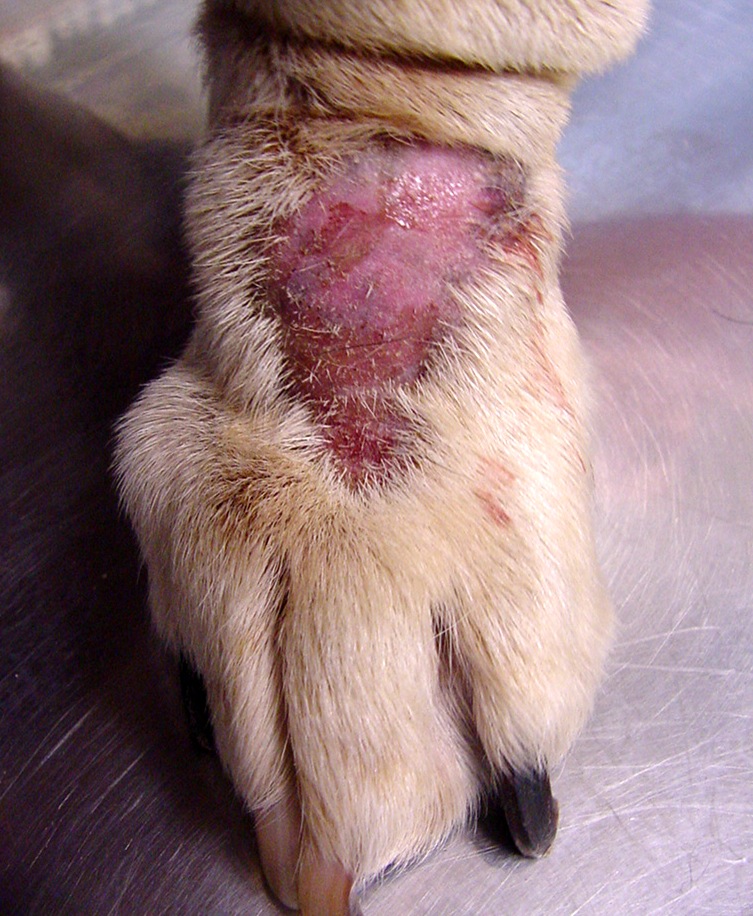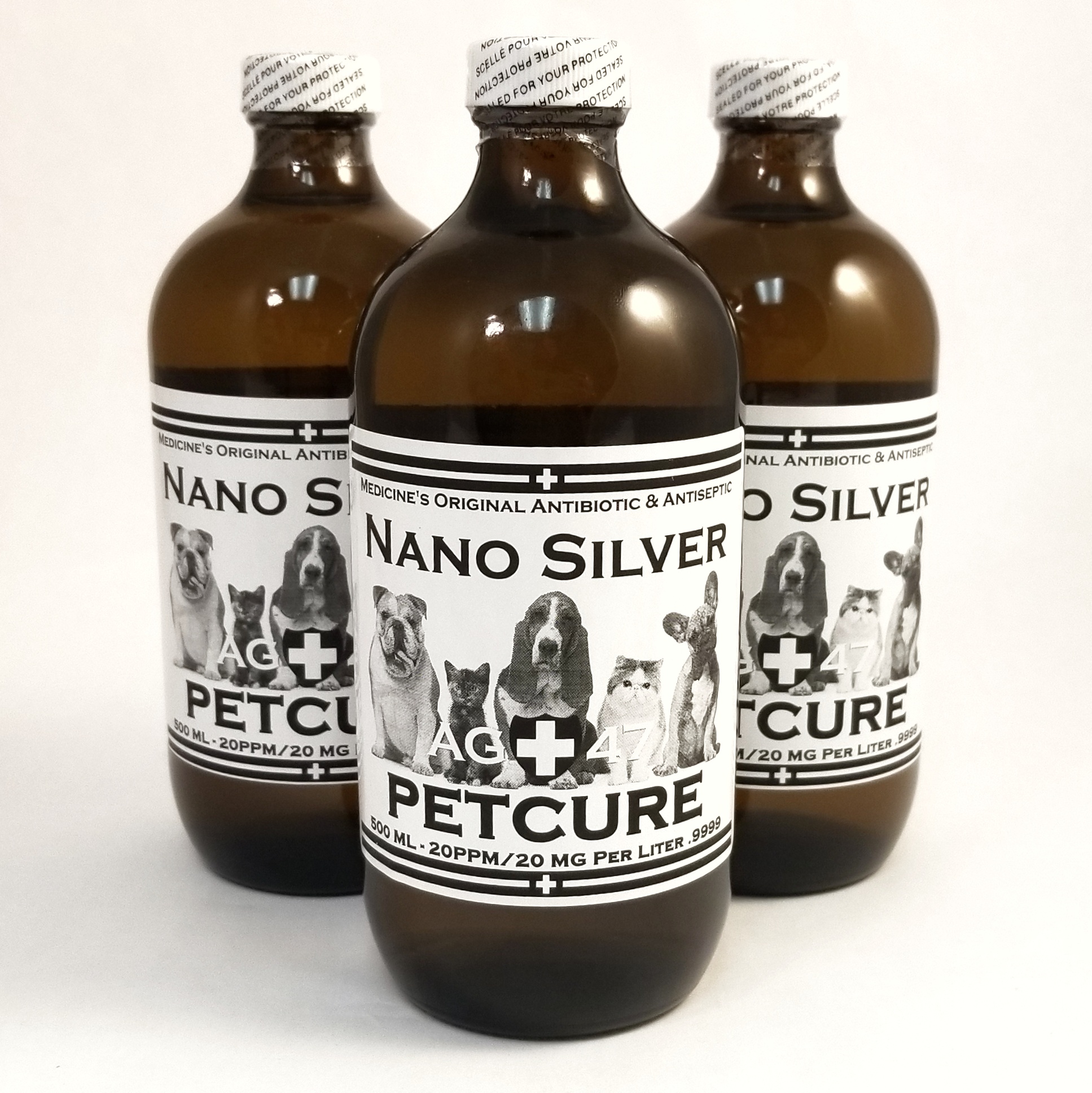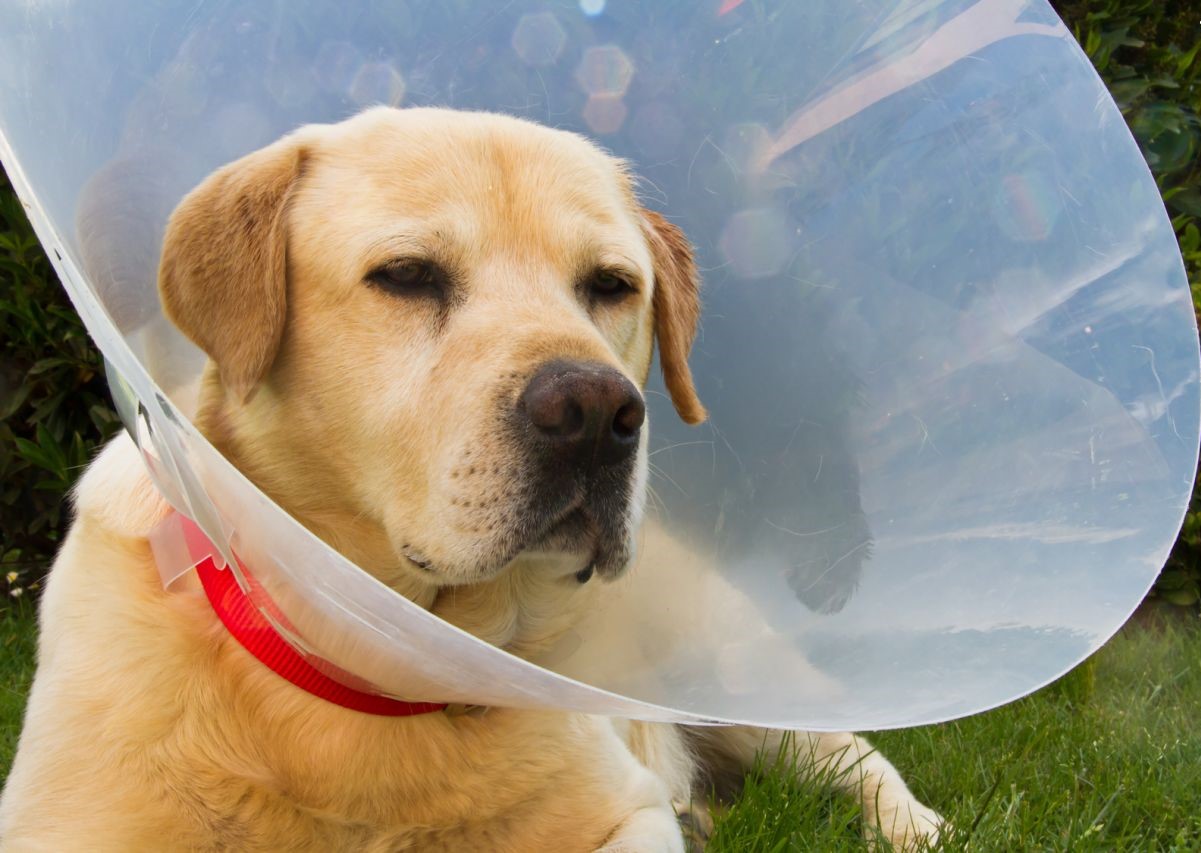Hot Spots;
What are they and where do they come from?
Hot spots are one of the more misunderstood problems that tend to surface on our pets. They are created when your dog’s natural bacteria overpopulates parts of his skin. Hot spots often occur in dogs with under performing immune systems and more often than not veterinarians will inform you it is an allergy and put your dog on medication.
Dr. Dobias mentions that your dog will first receive “antibiotics and antihistamines, then steroids. This usually unleashes the nasty dragon of side-effects, such as liver disease, obesity, muscle weakness, excessive thirst and urination, adrenal gland problems and believe it or not, usually more itching.”
HOT SPOT ORIGIN

 If we take a look at the surface of a hot spot we see that they are nothing more than a bacterial infection that has settled into the top layer of the skin and become inflamed.
If we take a look at the surface of a hot spot we see that they are nothing more than a bacterial infection that has settled into the top layer of the skin and become inflamed.
Say your dog has had a great day swimming in the dirty pond water on a relatively humid day, then decides to lay in the shade with her shaggy coat still wet from her swim. This has created a dirty, soggy, warm, and hospitable environment for your dogs natural bacteria to overpopulate. This is a perfect beginning for a potential full body allergic reaction which includes those rotten hot spots.
TREATING HOT SPOTS
Hair removal. In order to properly treat your dog’s wound the first thing you will need to do is remove the hair on and around the affected  area.
area.
Even if you don’t want to remove it just remember that hair is hair and it will grow back! In the case that you don’t remove the hair it can become trapped in the hot spot creating more pus and making it much more difficult for your dog to heal – this can even help create a bigger infection causing the wound to get worse. In short, we recommend you get your dog’s wound shaved to prevent the infection from spreading.
Disinfecting the wound. Once you’ve shaved the area you can begin gently disinfecting the wound with a solution that will remove bacteria. We recommend using a spray such as Colloidal Silver,Miracle Dust, or Restore . Other topical solutions you can use could be a thin layer of manuka honey, raw aloe, or a cool chamomile tea bag pressed against the wound to soothe the itch.
In the beginning – at least days one and two of the disinfecting routine – while there’s a lot of oozing from the wound, you’ll want to repeat the disinfecting procedure as often as necessary to keep the area clean, dry and pus free.
Your goal in managing the hot spot is to keep the area clean and dry at all time.
Stay away from products with stinging or astringent properties on an open, raw wound. Solutions like vinegar or tea tree oil, while they are anti-microbial, are really painful when applied to an open, raw wound.
Continue the disinfecting procedure until the wound shrinks in size, the infection clears and your pet is no longer bothered by the hot spot.
 No licking or scratching! Obsessive licking and/or scratching will not help you pet heal – insuring your pet leaves the hot spot alone is critical to the healing process. You will probably need to use an E collar on your dog (yes, your dog will have to become one with the lampshade) to prevent him/her from licking and biting the affected skin.
No licking or scratching! Obsessive licking and/or scratching will not help you pet heal – insuring your pet leaves the hot spot alone is critical to the healing process. You will probably need to use an E collar on your dog (yes, your dog will have to become one with the lampshade) to prevent him/her from licking and biting the affected skin.
As an alternative to the E collar, you may be able to manage the wound by applying a light wrap or putting a t-shirt on your pet, as long as you are sure they are unable to access the wound.
FINDING THE ROOT CAUSE OF YOUR PET’S HOT SPOT
Allergic Sensitivity. Being able to manage hot spots is to identify why they happen. This can range from allergies, mental boredom, all the way over to underlying pain.
Both food and environmental allergies can cause hot spots. If you begin noticing that each time you give you’re a piece of your crust and he/she gets a hot spot shortly after, there’s a high chance he/she has a grain-based allergy. If it is as simple as that you can begin making adjustments to your dog’s diet.
Environmental allergies can also cause hot spots.
Grasses, pollen’s and molds are typical allergens, but it can also be polluted water or even toxic air that can cause a secondary hot spot on your pet.
The big bad flea, these little guys are a real pest from every angle you look. Flea allergy dermatitis is also a major reason why animals get hot spots. You may not be able to see the flea but if your dog is sensitive even one bite can cause an awful flare up of hot spots.
Underlying painful conditions. If your dog has a painful spot on his/her body and they begin obsessively digging and chewing at the area, very quickly a hot spot can form. A good example would be if you have an older dog that has never suffered from hot spots but suddenly starts chewing at the skin over their hip joint, this could be a response to underlying joint, muscle, nerve, or bone pain.
Emotional or mental causes. Some dogs may suffer from mental boredom, OCD, separation anxiety…etc. These behavioral issues can cause your dog to obsessively lick and chew in one specific spot which creates hot spots.
Unfortunately behavioral causes are the most difficult to successfully treat as your pet will be obsessive about the area.
Remember – Keeping the infected area clean and your pup away from it will help with a quick healing process!


